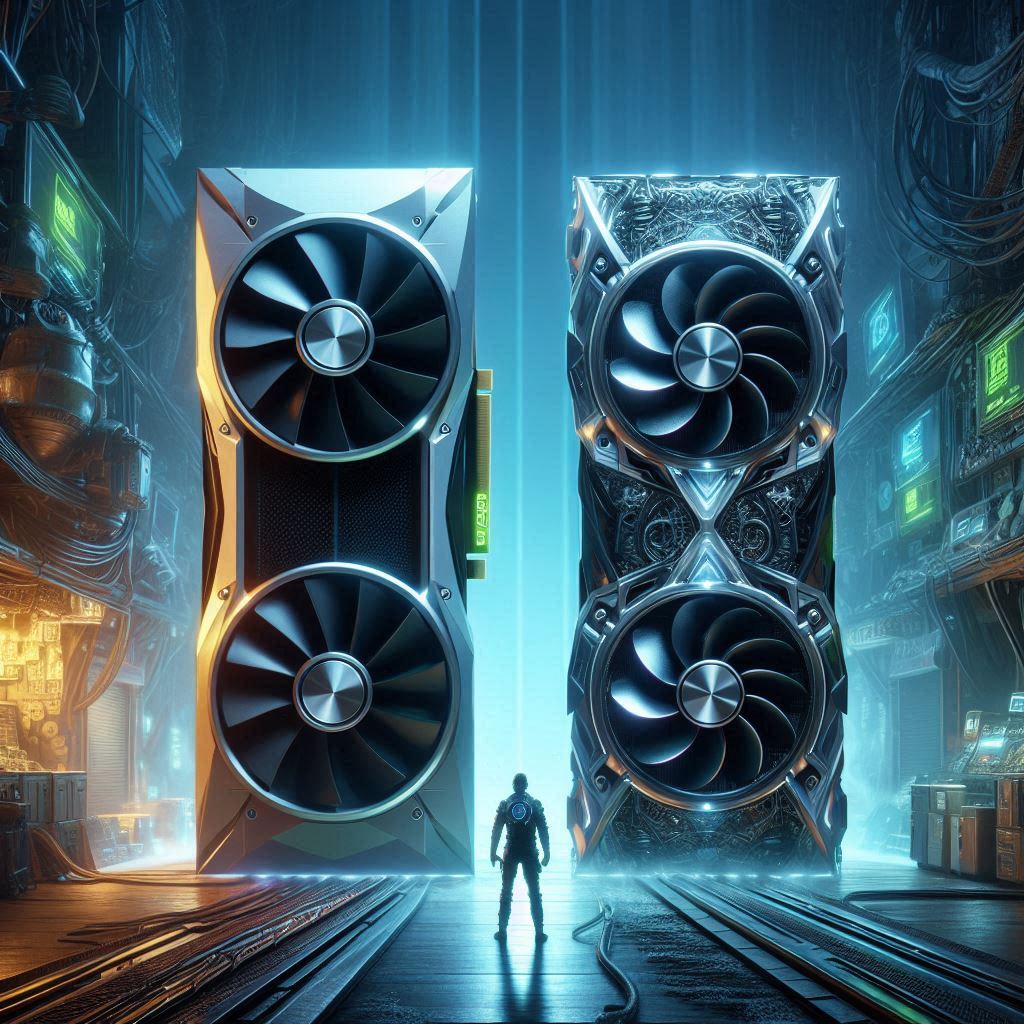Introduction to NVIDIA RTX 4080 and RTX 4080 Super
The world of graphics cards is buzzing with excitement as NVIDIA rolls out its latest offerings. Among the most talked-about models are the RTX 4080 and the newly released RTX 4080 Super. Both promise exceptional performance for gamers and content creators alike, but how do they stack up against each other? With cutting-edge technology and impressive specs, choosing between these two powerhouses can be a daunting task.
In this article, we’ll dive deep into their specifications, performance metrics, pricing details, and key differences to help you make an informed choice. Whether you’re looking to upgrade your gaming rig or enhance your creative workflow, understanding the nuances of “4080 vs 4080 Super” is essential for making the best decision tailored to your needs. Let’s explore what sets these two GPUs apart!
Specifications and Performance Comparison
When comparing the NVIDIA RTX 4080 and RTX 4080 Super, specifications play a crucial role. The RTX 4080 boasts impressive performance with its Ada Lovelace architecture and cutting-edge Ray Tracing capabilities. With 16GB of GDDR6X memory, it’s designed for high-resolution gaming and demanding applications.
On the other hand, the RTX 4080 Super takes things up a notch. It features enhanced clock speeds and additional CUDA cores, providing more horsepower for intensive tasks. Gamers can expect higher frame rates in demanding titles while enjoying advanced graphics settings.
Power consumption is another important factor to consider. The RTX 4080 typically consumes less power compared to its Super counterpart due to its optimized design, making it an excellent choice for those focused on energy efficiency without sacrificing performance.
In real-world scenarios, benchmarks indicate that the differences can significantly impact gameplay experiences across various genres.
Price Comparison
When it comes to price, the NVIDIA RTX 4080 and RTX 4080 Super cater to different budgets. The standard RTX 4080 typically falls into a more accessible range for most gamers.
The RTX 4080 Super, however, usually commands a higher price tag. This premium is often justified by enhanced features and performance boosts. Gamers looking for cutting-edge technology may find it worth the investment.
Retail prices can fluctuate based on demand and availability. It’s essential to check multiple retailers before making a purchase decision.
Consider also that some models come with added perks such as bundled games or extended warranties, which can influence value significantly. Always assess what you’re getting for your money when comparing these two graphics cards within your budget constraints.
Key Differences Between RTX 4080 and RTX 4080 Super
The RTX 4080 and the RTX 4080 Super may seem similar at first glance, but they have some notable differences.
One of the key distinctions is their core architecture. The Super variant typically boasts an enhanced CUDA core count, leading to improved performance in gaming and rendering tasks.
Power consumption also varies. The RTX 4080 Super often requires more wattage, which could mean a need for a beefier PSU if you’re considering an upgrade.
Cooling solutions differ as well. The Super model usually features superior thermal management systems, allowing it to maintain optimal temperatures during intensive workloads.
Clock speeds play a role in user experience. While both cards offer impressive capabilities, the higher boost clock on the Super can translate into better frame rates in demanding scenarios.
Which One Should You Choose?
When it comes to choosing between the RTX 4080 and the RTX 4080 Super, your decision heavily depends on your specific needs. If you’re a gamer looking for cutting-edge performance without breaking the bank, both options have their merits.
The RTX 4080 is an excellent choice if you want solid performance in most modern games at high settings. It handles demanding titles with ease and provides a great balance of power and efficiency.
On the other hand, if you’re seeking that extra edge—especially in high-resolution gaming or intensive creative applications—the RTX 4080 Super might be worth considering. Its enhanced specifications offer improved frame rates and rendering capabilities.
Consider what you value more: cost-effectiveness or top-tier performance. Your choice should align with how you plan to use the card day-to-day.
Future of NVIDIA Graphics Cards
The future of NVIDIA graphics cards is brimming with possibilities. As technology advances, we can expect even more powerful GPUs that cater to both gamers and professionals.
AI integration will play a significant role in upcoming models. Enhanced machine learning capabilities could lead to smarter performance optimizations and improved graphics rendering.
Ray tracing is likely to become more sophisticated too. Future generations may provide real-time ray tracing at higher frame rates without sacrificing quality.
Energy efficiency is another area where NVIDIA might focus its innovations. Expect newer models to deliver exceptional performance while consuming less power, addressing environmental concerns.
Moreover, the competitive landscape will push NVIDIA to explore unique features and technologies that set their products apart from rivals. The anticipation for what’s next keeps enthusiasts engaged and excited about the evolution of gaming hardware.
Conclusion
When it comes to the NVIDIA RTX 4080 and RTX 4080 Super, understanding their differences can significantly impact your purchasing decision. Both models excel in performance and specifications but cater to slightly different needs.
The RTX 4080 stands out as a powerful option for gamers looking for top-tier graphics performance without venturing into the ultra-premium price range. Meanwhile, the RTX 4080 Super brings enhanced capabilities that may appeal more to enthusiasts or those seeking future-proofing.
Your choice should align with your specific requirements—be it gaming at high resolutions or demanding graphic workloads. As the landscape of NVIDIA graphics cards continues to evolve, keeping an eye on emerging technologies will help you make informed decisions now and in the future. Consider what matters most for your setup before choosing between these two formidable GPUs.

Leave a Reply